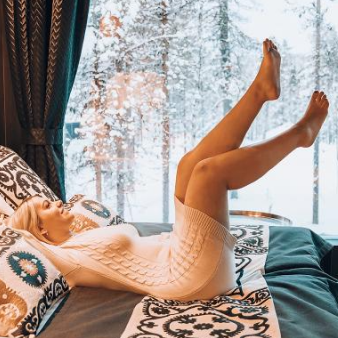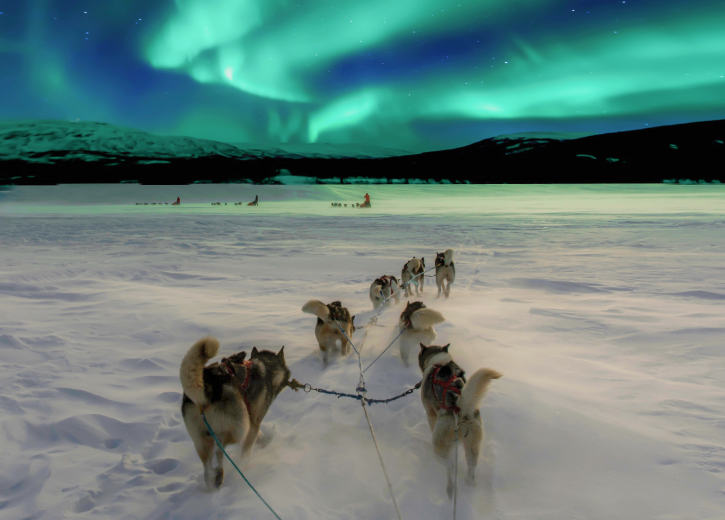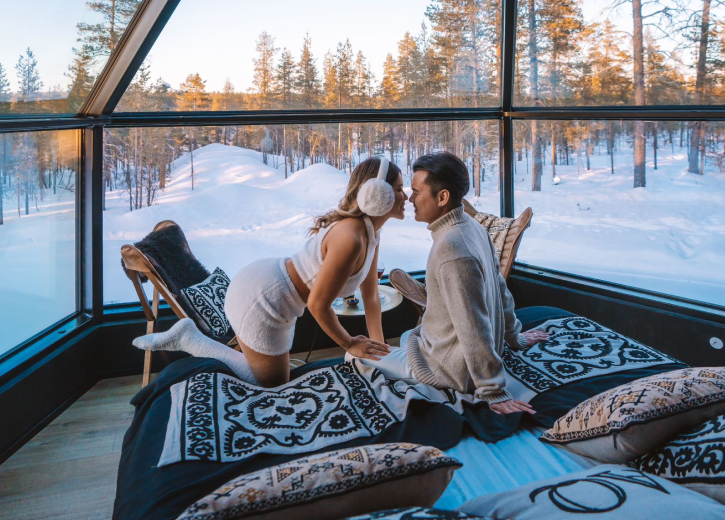Lapland typically receives between 175-225 cm of snowfall annually, with snow season beginning in mid-to-late October and lasting until May in most areas. The first snowflakes usually appear in October, but permanent snow cover generally establishes by November, creating Lapland’s characteristic winter wonderland. This extended snow season, lasting approximately 6-7 months, provides ideal conditions for winter activities and northern lights viewing in Finnish Lapland’s pristine environment.
Understanding Lapland’s winter wonderland: Snow patterns and seasons
Lapland’s reputation as a snow-covered paradise is well-deserved, with the region transforming into a magical winter landscape that draws visitors from around the world. This northernmost region of Finland experiences one of Europe’s most reliable and lengthy snow seasons, creating the perfect backdrop for winter adventures.
The pristine white landscapes of Finnish Lapland create ideal conditions for aurora viewing, as the snow reflects the dancing lights in the sky, enhancing their visibility and brilliance. At Aurora Queen Resort, our glass-ceiling igloos provide the perfect vantage point to witness this spectacular phenomenon while staying warm and comfortable amid the snowy surroundings.
The unique quality of Lapland’s snow – powdery, dry and exceptionally clean – contributes to the ethereal atmosphere that makes winter in northern Finland so special. Even local wildlife, like the curious fox, has adapted to these snowy conditions, leaving their delicate paw prints across the untouched snowfields surrounding our resort.
How much snow does Lapland typically receive each year?
Lapland receives an impressive average of 175-225 centimetres of snowfall annually, creating a substantial snow cover that reliably blankets the region throughout winter. This abundant snowfall varies somewhat across northern Finland, with higher elevations generally receiving greater accumulations.
During peak winter months (January-March), snow depths typically range from 60-90 centimetres in most areas, providing ideal conditions for all manner of winter activities. The quality of Lapland snow is notably light and powdery due to the consistently cold temperatures, creating perfect conditions for skiing and snowshoeing.
At Aurora Queen Resort, our guests can experience this remarkable snow cover firsthand. The peaceful surroundings of our resort showcase Lapland’s winter at its finest, with snow-laden trees and pristine white landscapes creating a truly immersive northern experience. The contrast between the crisp white snow and the dark winter sky creates optimal conditions for spotting the northern lights from the comfort of our glass-ceiling igloos.
When does snow usually start falling in Lapland?
Snow typically begins falling in Lapland by mid-October, with the first snowflakes often appearing even earlier at higher elevations. While these initial snowfalls may melt quickly, they herald the approaching winter season that defines the region.
Permanent snow cover generally establishes by early to mid-November in most areas of Finnish Lapland, though this timing can vary by a few weeks depending on the specific location and yearly weather patterns. By December, the entire region is reliably blanketed in snow, creating the quintessential Lapland winter landscape that lasts for several months.
The establishment of snow cover varies across northern Finland, with areas further north and at higher elevations typically seeing snow earlier. This gradual progression of winter across the region creates a magical transformation that draws visitors seeking authentic winter experiences.
Our guests at Aurora Queen Resort often marvel at how quickly the landscape can transform after the first substantial snowfall, with the natural environment around our igloos becoming a pristine white wonderland that enhances the northern lights viewing experience.
How long does the snow season last in Finnish Lapland?
The snow season in Finnish Lapland is remarkably long, typically lasting 6-7 months from October/November until April/May. This extended period of reliable snow cover is one of the region’s most distinctive features and a primary reason why winter enthusiasts flock to northern Finland.
Snow begins to gradually melt in April, though higher elevation areas and forests may retain patches of snow well into May or even early June in some years. This long-lasting snow season provides visitors with ample opportunity to experience winter activities throughout much of the year.
The most reliable period for substantial snow cover is from December through March, making these months ideal for visitors seeking the full winter experience. During this time, the snow is typically at its deepest and most consistent across the region.
At Aurora Queen Resort, we’re fortunate to be situated in an area that benefits from this extended snow season, allowing our guests to experience the magic of Lapland’s winter landscape and optimal aurora viewing conditions throughout their stay in our glass-ceiling igloos.
What winter activities can you enjoy in the Lapland snow?
Lapland’s reliable snow cover creates perfect conditions for a wide range of winter activities that allow visitors to immerse themselves in the region’s natural beauty. Snowshoeing is particularly popular, offering a peaceful way to explore the snow-covered forests and appreciate the pristine winter landscape.
Cross-country skiing is another beloved activity in Finnish Lapland, with well-maintained trails winding through scenic winter terrain. More adventurous visitors might enjoy snowmobile safaris or husky sledding experiences that provide an exhilarating way to traverse the snowy expanses.
Northern lights viewing is enhanced by the snowy conditions, as the white landscape reflects the aurora’s glow, making the display even more spectacular. The contrast between the dark winter sky and bright snow creates ideal conditions for witnessing this natural phenomenon.
At Aurora Queen Resort, we can arrange snowshoe hikes through the surrounding winter wonderland, allowing guests to experience the tranquility of Lapland’s nature. After a day of winter adventures, there’s nothing quite like returning to the warmth of our glass-ceiling igloos to watch for the northern lights dancing above the snow-covered landscape.
Key takeaways: Planning your snowy Lapland adventure
When planning your visit to experience Lapland’s magnificent snow, timing is essential. For the most reliable snow conditions, December through March offers the deepest snow cover and the full winter experience, though snow typically begins falling by October and lasts into May.
Pack appropriate winter clothing for temperatures that can range from -5°C to -30°C during peak winter months. Thermal layers, quality snow boots, and insulated outerwear are essential for comfortably enjoying outdoor activities in Lapland’s winter environment.
Consider planning your stay around the activities that interest you most. Whether it’s quiet snowshoe walks through pristine landscapes, exhilarating snowmobile adventures, or peaceful evenings watching for northern lights above the snow-covered terrain, Lapland offers winter experiences for every preference.
At Aurora Queen Resort, we invite you to experience the magic of Lapland’s winter from our glass-ceiling aurora view igloos. Surrounded by the peaceful snow-covered landscape of northern Finland, you’ll have the perfect opportunity to witness the interplay between snow and sky that makes winter in Lapland so special, perhaps even glimpsing a fox leaving tracks in the fresh snow as you gaze upward at the dancing northern lights.



